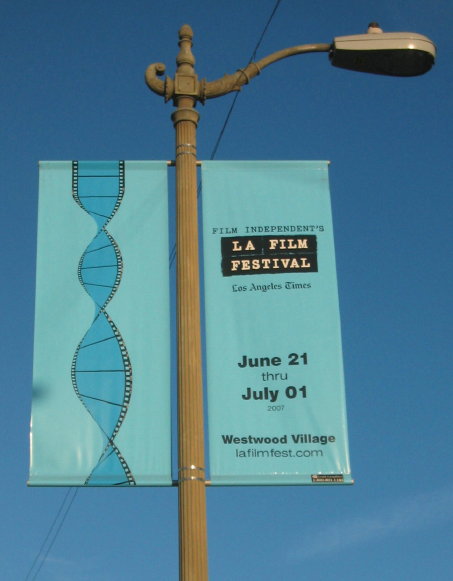 As you may know from some of my earlier writings, I dream of the day when science is just as much a part of the typical person’s conversation as, say, the latest antics of Paris Hilton. This is not just because I happen to be a scientist, but because we’re increasingly becoming less of a democratic society when on the one hand there are more and more issues dominating our lives that are basically science issues (energy sources, aids and cancer research, stem cells, global warming, air and water quality, food safety, etc) and on the other hand science is still largely feared, and left as the province of the “geek”, the “nerd”, and all those other select few people in business and politics who are essentially controlling our everyday lives by being handed the scientific reins of society. So, as part of reversing that trend and restoring equal opportunity in the broadest sense, I like to think that we can have increased comfort with science concepts and images infiltrating and enriching our everyday language.
As you may know from some of my earlier writings, I dream of the day when science is just as much a part of the typical person’s conversation as, say, the latest antics of Paris Hilton. This is not just because I happen to be a scientist, but because we’re increasingly becoming less of a democratic society when on the one hand there are more and more issues dominating our lives that are basically science issues (energy sources, aids and cancer research, stem cells, global warming, air and water quality, food safety, etc) and on the other hand science is still largely feared, and left as the province of the “geek”, the “nerd”, and all those other select few people in business and politics who are essentially controlling our everyday lives by being handed the scientific reins of society. So, as part of reversing that trend and restoring equal opportunity in the broadest sense, I like to think that we can have increased comfort with science concepts and images infiltrating and enriching our everyday language.
I was delighted therefore to see (a couple of months ago now) the poster campaign of the Los Angeles Film Festival for 2007. It is a perfect example from that society that lives in my dream. It unselfconsciously has encapsulated the two big themes they wanted to convey quite marvellously. On the one hand, there’s no doubt that it is about film (you don’t even need the rest of the poster to tell you this) as there is the film reel, and on the other hand, they want to remind you without a doubt that this is a land of film, and they did this with a simple slogan that put to rest any doubts about their intent in twisting the reel to bring out a double helix structure: “It’s in our DNA”. Excellent. I’d like to shake the hand of the designer(s) who came up with this. (Read a bit about the DNA molecule -which contains our biology’s “blueprint”- and its double helix structure at the Nobel Prize site.)
Here is the detail from one of their posters that I snipped from their website: […] Click to continue reading this post →

 There’s another article about the search for the Higgs particle, the recent rumour kerfuffle involving the Tevatron, and the upcoming LHC experiment at CERN. (See related articles at bottom of this post.) This time it is in the
There’s another article about the search for the Higgs particle, the recent rumour kerfuffle involving the Tevatron, and the upcoming LHC experiment at CERN. (See related articles at bottom of this post.) This time it is in the  As you may know from some of my earlier writings, I dream of the day when science is just as much a part of the typical person’s conversation as, say, the latest antics of Paris Hilton
As you may know from some of my earlier writings, I dream of the day when science is just as much a part of the typical person’s conversation as, say, the latest antics of Paris Hilton
